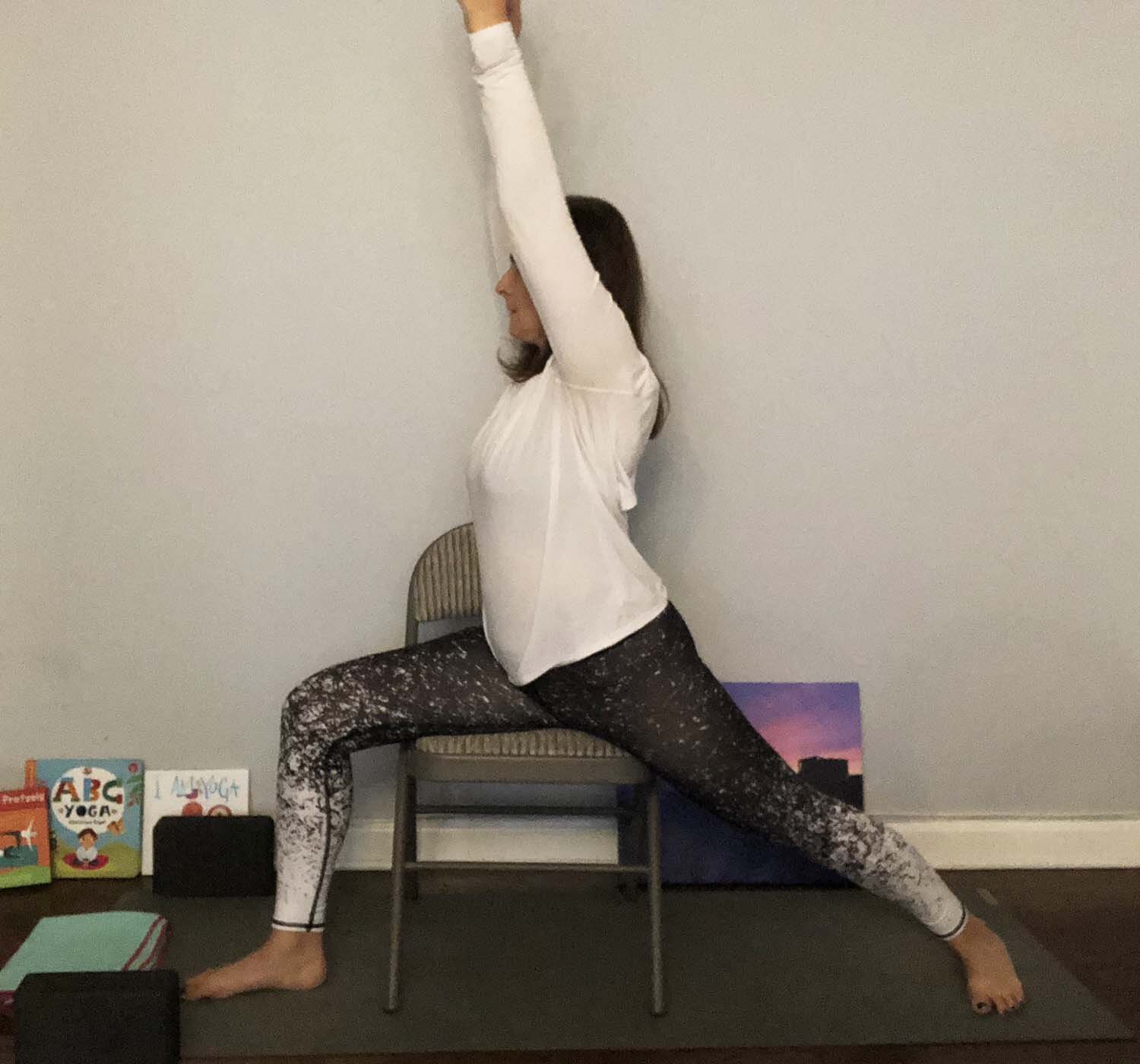
Yoga Practice:
Warrior Pose
Overview:
The Warrior Pose, or Warrior 1, engages the muscles of the calves, thighs and hips to stabilize the legs, the shoulder muscles to lift the arms, the front hip flexes, while the back hip extends and eventually rotates, the inner thigh musculature lengthens, and the calf muscles lengthen in the back leg.
Potential Effects:
Strengthens muscles of the legs, seat, abdomen, and shoulders
Stabilizes ankles, knees, hips, and low spine
Stretches the hip flexors and calf of the back leg
Cultivates strength and endurance
Instructions:
1. From mountain pose, step back with your left foot on an exhale. Step back far enough that as you bend your front knee, it stays above or just behind the front ankle.
2. Spiral your back heel down to the floor so that your back foot is parallel with the back of the mat, slightly turned inward. As you do this, keep your hips squaring towards the front of the mat as much as possible without overarching the low back.
3. Press through the legs to stabilize the ankles, knees, and hips. Lengthen through the spine, lifting up from the dome of your pelvis and reaching through the top of your head.
4. Reach your arms out to the sides, and up overhead, turning the palms to face one another. Allow the shoulders to spread and rotate upward.
5. To release the pose, bring your arms dow lifting the back heel. With an exhale, step your foot forward to return to mountain pose.
Warrior 1 Pose, Front View
Warrior 1 Pose, Front View
Warrior 1 Pose, Front View
Child in Warrior 1 Pose, Front View
Warrior Flow
Warrior Flow Using a Chair as a Prop
Precautions:
Heart and circulatory conditions: practice with care and moderation
Weak or sensitive knees: shorten the stance to reduce the knee bend
Contraindications:
Recent surgery or acute injury to any key muscles or joints
Chronic or recent injury, pain, or inflammation to any key muscles or joints
Essential Principles:
The combination of strength, balance, and asymmetrical action in Warrior Pose can make it a complex and engaging challenge/ Offer cues in a graduated way to encourage students to bring awareness to each part of the pose before sustaining and experiencing their full expression of Warrior.
Options:
To simplify this posture, keep your hands on your hips.
To moderate the intensity, shorten your stance.
To add support, bring hands to the top of the front thighs.
To simplify the dynamics and add support for the back hip and leg, lift the back heel to a lunge position, or bring the back knee down to a blanket or the floor.
Helpful Hints:
Never overdo or force any yoga movement. If you begin to experience discomfort or pain, release the posture. Find a variation of the posture that serves your body and practice best.
Practice with self-compassion and non-judgement
Warrior Pose can be done standing, in a chair, or using a chair as a prop.
Content from NYCDOE YMTP² curricular materials






